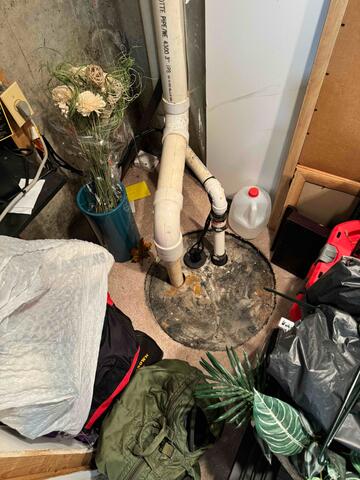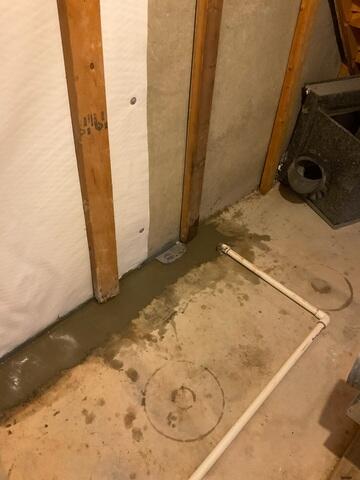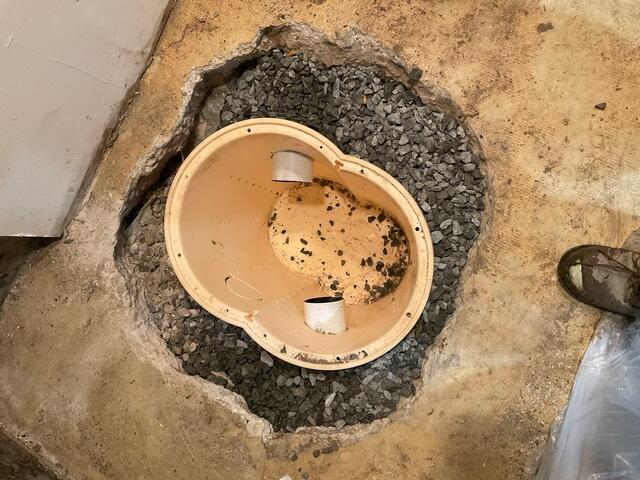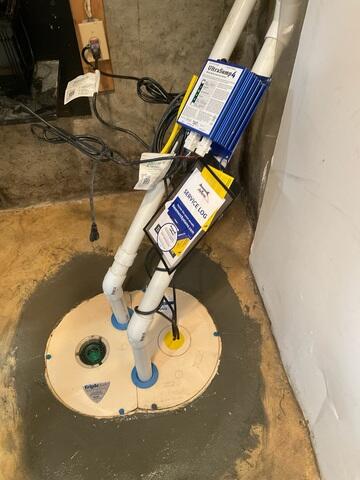
Old Sump Pump
Over time, sump systems can clog, wear down, or simply lose efficiency-especially if they haven't been maintained or upgraded. When a sump pump can't keep up with rising groundwater or heavy rain, excess water has nowhere to go and can start to seep through floor cracks or along the walls.

WaterGuard Drainage System
First, we carefully removed a section of the concrete floor along the perimeter walls to create a clean trench. Next, we placed the WaterGuard System just above the footing-out of the "mud zone" to prevent clogging-ensuring water from the walls and floor is efficiently collected. Finally, we sealed the system with fresh concrete, leaving a clean, flush finish. This hidden drainage solution channels water straight to the sump pump, protecting the home from seepage and future flooding.

Installing TripleSafe
We started by excavating the old sump pit and creating a clean, properly-sized basin for the new system. The TripleSafe includes three pumps: a primary pump for everyday use, a secondary pump for heavy water flow, and a battery-powered backup to keep things running during power outages. Once in place, we connected the discharge lines, tested each pump, and sealed the basin with an airtight lid to keep out moisture and odors.

The Benefits Of TripleSafe
TripleSafe features a primary pump for everyday water removal, a secondary pump for heavy rains or high volumes, and an UltraSump battery backup pump that keeps working even during power outages. This layered defense system ensures this basement stays dry no matter the weather or circumstances. Plus, the airtight lid helps keep out moisture, odors, and debris-making it a cleaner, quieter solution.










